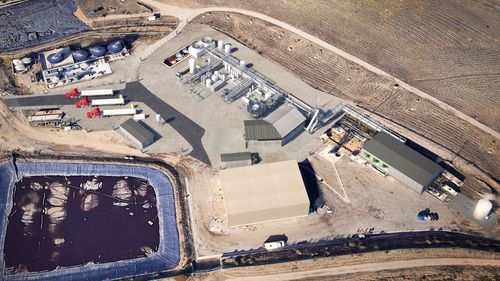As of June 2024, ReSource has recorded 35 green and blue methanol projects in North America, including announced, greenfield, canceled, and operational.
Eight are in Canada and 27 are in the United States, with over half of those concentrated in and around the Gulf Coast region.
Overall, the announced production capacity is over 30 million metric tons per year.
23 projects aim to produce or are already producing green methanol, which includes both e-methanol, which is produced using green hydrogen and CO2, and bio-methanol.
“The US methanol producers have ISCC certification to produce bio-methanol on a mass balance basis,” said Greg Dolan, chief executive officer of the Methanol Institute, a global trade association. “What that means is that you have an existing fossil natural gas base unit, but you buy credits for biogas, biomethane going into the pipeline system. And on the back end of the unit, you can produce ISCC or EU certified bio methanol on a mass balance basis.”
Over four North American projects, including those producing bio-methanol only and those producing bio-methanol in addition to e-methanol and/or blue methanol, marked as hybrid in the infographics, are already operational.
No e-methanol projects have reached commercial production yet, and the only one that is operational, Air Company’s, in New York, is a smaller facility.
“In the past, where we’ve seen bio-methanol and e-methanol projects, they’ve been more like 4,000 to 10,000 metric tons per year,” Dolan said. “But now we’re seeing those projects scaling up pretty dramatically, to 50, 100, 500,000 metric tons a year.”
HIF USA’s greenfield Matagorda eFuels project in Texas is expected to produce up to 1.4 million metric tons per year of e-methanol once it becomes operational in 2027.
Six projects aim to produce blue methanol, also known as low-carbon methanol.
In March 2024, Mitsui and Celanese, announced that the ISCC has certified its blue methanol under the ISCC Carbon Footprint Certification system, having achieved a greater than 70% reduction in carbon footprint relative to a global average benchmark for fossil-based methanol production. The blue methanol is produced at the companies’ Fairway Methanol plant, which was already producing bio-methanol.
Methanol’s current main use is as a marine fuel for the commercial shipping industry. It can be blended together regardless of whether it’s gray, blue or green to achieve the preferred carbon intensity. The ability to blend sustainable fuels, according to Dolan, is going to be “a big part” of the energy transition.
Last year, for example, Methanex and Mitsui O.S.K. Lines completed a “net-zero” commercial voyage from Geismar, in the U.S., to Antwerp, in Belgium, by using a fuel that blended bio-methanol and gray, natural gas-based methanol.
Methanol, like ammonia, is also a promising hydrogen-carrier, according to Dolan.
At the moment, when it comes to projects, the U.S. is still behind China, which has a florid gray methanol production and is advanced in terms of renewable methanol production.
“But we think when the tax credits for the IRA are fully implemented, we’ll see a lot more projects being announced in North America and the United States,” Dolan said.





